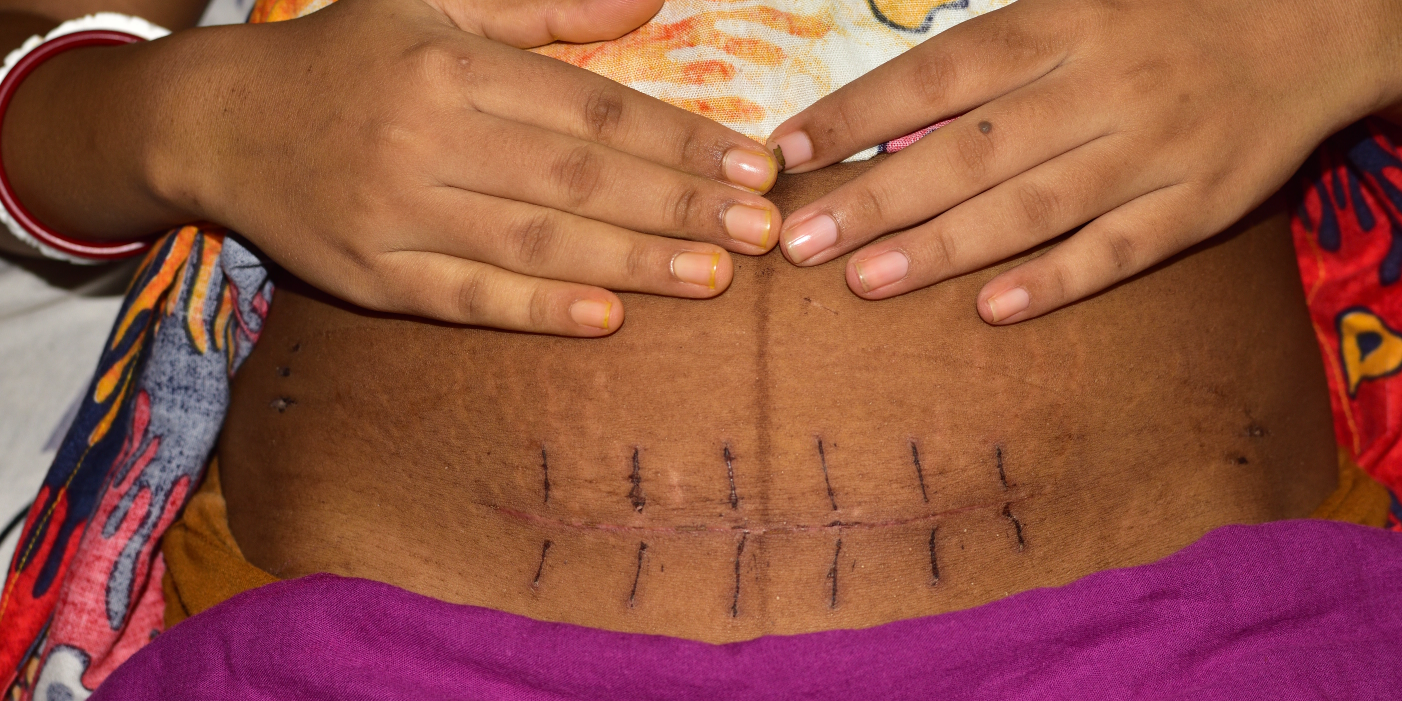
Fast facts:
The postpartum period is a big transition, with immense physical and emotional changes.
Those who delivered by c section have the additional challenge of healing from a major surgery — which makes you one tough mom — on top of all the other adjustments that happen in the days and weeks after childbirth.
While no two c section recoveries are the same, there are some aspects you can plan for to ease discomfort and get back on your feet.
Here’s what to expect in the days and weeks ahead.
C section recovery is a gradual process. Full recovery, in terms of rebuilding muscle and overall rehabilitation of the body, often takes 6-12 months or more.
After 6-8 weeks, your scars should have healed enough to apply topical lotions and wear regular clothes without discomfort, and safely resume daily activities.
Many moms who have had a c section often stay in the hospital for about four days after childbirth. Specific timing varies by individual and involves many different factors.
Immediately following surgery, you’ll go to a recovery room. Here the hospital staff will continue to monitor your blood pressure, temperature, and bleeding from your vagina and the surgical incision.
In most cases, you’ll be able to hold your newborn right away and breastfeed, if you’ve decided to do so.
Most individuals are moved from the post-operative area to the postpartum recovery unit on the first day.
Nurses may massage your uterus to help it contract and return to its normal, pre-pregnancy size and shape. It may also be safe to try getting on your feet and gently moving.
Pain often peaks around the 18-hour mark, as spinal anesthesia wears off. There are different pain relief options to discuss with your care time, covered in more detail below.
Your care team will likely encourage you to get up and move around for short periods of time beginning the morning after your surgery until you return home.
It may cause some pain, but gentle physical activity can boost circulation and prevent constipation. You should be able to shower the following day as well.
Your care team will guide you in safety precautions and incision care, like letting warm water run over your incision rather than scrubbing it. Vaginal bleeding and a discharge called lochia occur even with a c section, so be prepared to wear a pad for up to several weeks.
Your doctor will let you know when it’s safe to eat solid food before leaving the hospital. Gas pains and swelling may continue until your bowel function returns to normal. Over-the-counter treatment options can help with pain relief during this time.
Many women are able to treat pain and discomfort with ibuprofen and acetaminophen. If you are still experiencing pain after taking these medications, your care team can help you discuss additional options.
Be sure to continue to take medication as needed or on the recommended schedule to avoid any unnecessary discomfort.
Consult your healthcare provider if you experience any of the following:
Taking stool softeners can help during c section recovery. Many women experience constipation postpartum, and c section delivery can further slow digestion.
You will likely be offered stool softeners in the hospital to prevent constipation and can continue to take them once you’re home.
Incision care is another important part of c section recovery. You may experience itching at the incision site while your body heals. Try as much as possible to avoid scratching the incision.
Cold treatments, like applying an ice pack to the incision, can help reduce pain, itching, and swelling, and petroleum jelly can also help prevent itching.
High-waisted c section recovery underwear is specifically designed to help with incision care, preventing chafing and irritation.
Breastfeeding after a c section is possible, but there are some additional considerations to be mindful of. How soon you can start breastfeeding after a c section depends in part on whether you had epidural or general anesthesia during surgery.
Epidural anesthesia consists of an injection into the spine that begins to numb the back and legs within 10 minutes. In contrast to general anesthesia, you are awake and alert under epidural anesthesia.
Those who had epidural anesthesia typically can start breastfeeding earlier, while those who had general anesthesia may need to wait a few more hours.
If you had epidural anesthesia, you’ll typically breastfeed for the first time in the recovery room. Depending on your hospital or birthing site’s policies you may be able to breastfeed in the operating room.
Pain from the incision can cause additional discomfort while breastfeeding, along with afterpains you may feel as your uterus returns back to its pre-pregnancy size.
In some cases, c section delivery may delay milk production by a few days. There are some things you can do to stimulate the production of mature milk. This includes skin-to-skin contact with your newborn and breastfeeding on demand.
In the meantime, your body should continue to produce colostrum, which is a good source of nutrients for your newborn.
Support from a lactation consultant can help ease discomfort as you transition into breastfeeding.
(Keep in mind that in addition to the layer of visible incisions, there are also six layers of incisions beneath the skin.)
If you decide to use a belly wrap, be sure it’s a good fit. Wearing it too tightly can add pain and pressure, or contribute to pelvic floor prolapse or itchiness.
A good rule of thumb is to avoid anything stiff, anything with hooks, clasps, boning, or binders of any kind.
You don’t have to go through c section recovery alone, and asking for help is not only okay during this time — it’s encouraged! Take those friends and relatives up on their offers to jump in on diaper changes and errands. Every minute of rest helps.
We’re here to help you heal. Our c section recovery program was specifically designed to provide emotional, physical, and mental support, with gentle movement, stabilizing physical therapy, strength and resistance training, and breathwork.
You can start safely as early as 24 hours postpartum. Learn more or book a session.
Sign up for a FREE eBook + 20% off services

Sign up for our free eBook, plus 20% off of your next booking!